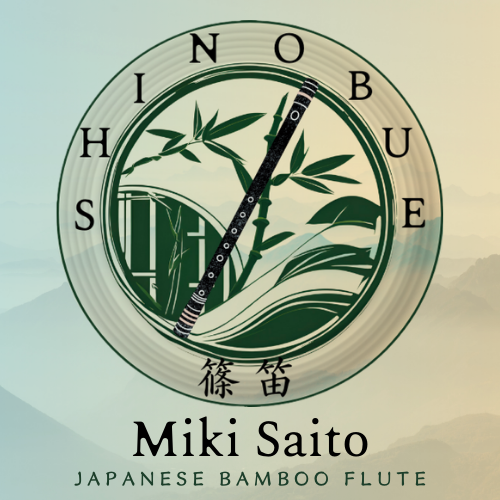Shinobue flute: Ryo on 1 and Kan on 1 - You can do them!!
Let’s play “Haru no Ogawa” and conquare your ryo on 1 and kan on 1 issues! Here are a few reasons why:
It’s a fantastic song for beginners, featuring only Ryo on notes and Kan on 1. Its straightforward rhythm allows you to focus on notes.
Ryo on 1 and Kan on 1 are two of the biggest challenges that beginners face, and even intermediate players often struggle with them.
“Haru no Ogawa” translates to “Spring Brook,” which is perfect for this time of year! 🌷
I uploaded a fingering tutorial video to my channel yesterday, but I’m going to break it down even more here. Let’s get into it!
The First Phase:
三 五 六 五 三 五 1 1
The most challenging aspect of this phrase is transitioning from 五 to 1. Nearly all beginners tend to blow too forcefully when trying to produce kan on 1. However, blowing hard on kan on 1 is counterproductive. Doing so will result in an aggressive and airy sound instead. Here is an effective way to practice this phrase.
First, practice just playing 五 1、五 1、repeatedly. Instead of tightening your lips and blowing hard for 1, keep your mouth relaxed and think about using a slow and steady breath for 1. Connect to your lower body and use diaphragmatic breathing to propel the power (not use the mouth power).
Do this over and over every day. Even if you feel like you are not making any progress, keep on practicing. Don't try to make a loud sound, but rather, strive for a smooth transition.
Remember that with most shinobues, both the ryo on 1 and kan on 1 will not produce a loud sound. Expecting a big sound may trigger you to blow too much air.
Once you feel more comfortable with playing 五 1、then try playing 三 五 1 1. This may take weeks.
In the mean time, practice 三 五 六 五 三 五.
Lastly, combine the entire phrase. This may take months, so practice other phrases concurrently.
Play along with the slow-motion versions of my fingering tutorial.
The Second Phase:
六 六 五 三 一 二 三
The challenging part of this phrase is finding the beautiful ryo on 1. In order to make a rich and resonating ryo on 1, practice ryo on 1 only over and over every day. Here are some tips.
Play ryo on 1 as a long tone. Use your lower body to keep a steady, very slow breath. Then take a rest. Then, take a low breath and repeat. Don't forget to take your time to take a low breath each time. If you don't take the low breath, don't even start playing since it won't be good anyway.
Pretend you are singing low notes to open your throat.
Create "OH" shape with your mouth.
Use "warm breath" and not "cold breath". "Warm breath" is the breath you use when you try to warm your hand in cold weather.
To play the shinobue effectively, it's important to remain calm, as your stress levels can easily affect your breath. This is particularly true when playing the ryo on 1. It’s essential to slow down your internal tempo.
If you're struggling with ryo on 1, it may be because your mind is racing from the busyness of your day. Take a moment to set aside thoughts of work, social obligations, or other distractions. Allow yourself to enter a zen-like state for five minutes; your ryo on 1 just might appear.
The Third Phrase
This is identical to the first phrase.
The Forth Phrase
Very similar to the second phrase.
The Fifth Phrase
二 三 二 五 六 六 五 六
Make sure your yubiuchi for the repeated notes (ryo on 6) is nice and crisp.
The Sixth Phrase
1 1 七 六 五 五 三
We often tend to blow too hard at the beginning of a phrase, and since this particular phrase starts with kan on 1, it becomes even more tempting to blow the air.
To practice starting with kan on 1, do this exercise repeatedly. Take a low breath, form the correct embouchure, and engage your lower body to start the sound. Don't blow with your lips. Initiate the sound by just using your lower body. You might find it helpful to squeeze your buttocks or engage your "tanden" for better breath control.
The rest of the song is a repetition of the phrases 3 and 4.
I hope you find this song helpful and fun for practicing ryo on 1 and kan on 1! You're going to do awesome! ❤️

